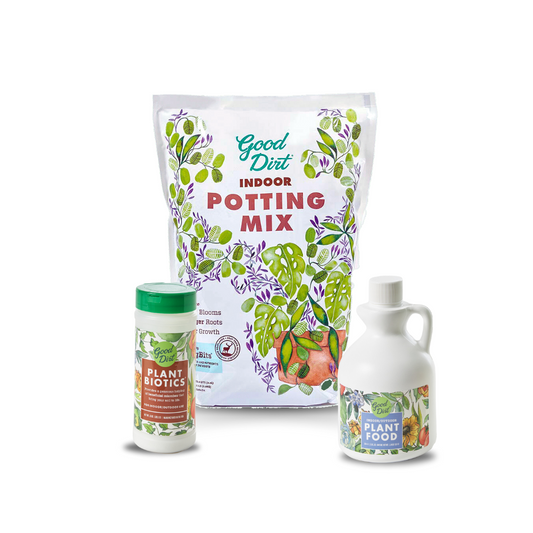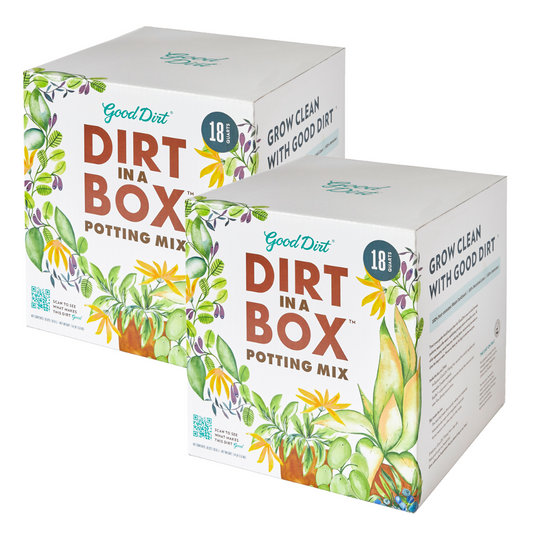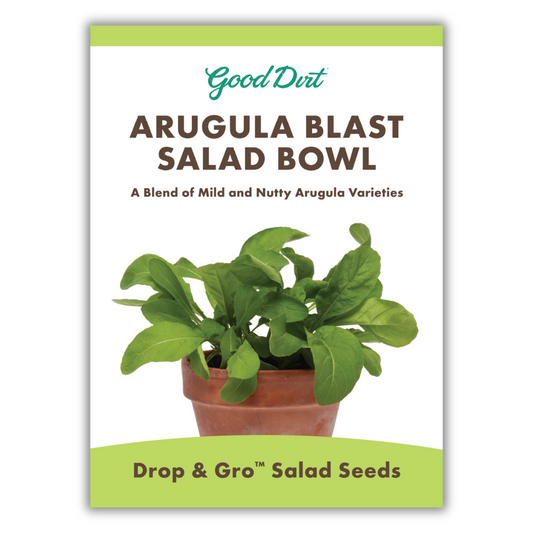Good Dirt's unique mix of peat moss and fibrous BogBits delivers excellent water retention, so you might need a lighter hand on your watering can. Overly wet soil leads to unhappy houseplants because it attracts pests like gnats and opens your plant up to diseases. In fact, overwatering is more likely to kill indoor plants than underwatering.
You'll know you have an overwatering problem if you notice wilting, limp leaves or pesky gnats. Follow these handy tips to repair the damage from too much water.
Fungus or soil gnats flying around your plant
You won't find bugs in our peat-based Good Dirt Potting Mixes, but any excessively wet dirt makes a welcome home for fungus or soil gnats. These annoying pests lay up to 300 eggs on the soil's surface, so you'll see them flying within days. If you see a pesky fungus gnat, immediately isolate the plant to make sure they don't infest surrounding plants. Use fly paper to catch them and apply a pest treatment to the soil. Allow the soil to dry, and don't add water until the soil is crumbly and loose.
Quick Fix: Dehydrate, isolate, treat
Standing water in the plant saucer
Oversaturated soil prevents oxygen from traveling to the plant's roots and will eventually rot the roots and soil. In addition to standing water, you can see and look for yellowing leaves, wilted or limp leaves, and stunted growth. If you see evidence of standing water, pour it off. Next, check to see if your drainage holes are blocked and clear them of any debris. If an overwatered plant doesn't dry quickly, try replanting in fresh soil.
Quick Fix: Dehydrate or replant
The soil remains wet between waterings
Even if the soil in your planter appears dry on top, it's important to check beneath the surface for signs of overwater. You may need to adjust your watering schedule if your plant isn't thriving. Before watering, insert a finger about two inches deep in the soil to determine if there is excessive moisture. If the soil feels crumbly and remains loose, it's time to water! If it's wet, don't add more water! When in doubt, use a moisture meter to monitor your plant's water needs. Always choose pots with drainage holes to keep your plant from sitting in water.
Quick Fix: Dehydrate, adjust watering schedule

Maintaining the delicate balance that houseplants require to thrive can be hard. Signs that you are overwatering include limp leaves, visible standing water in the plant saucer, and the dreaded soil gnats. If your plant isn't too far gone, you can repair the damage and return it to health. In the future, adjust your watering method or schedule so the soil dries completely between waterings. Check out Everything You Need to Know about Watering Plants to learn more about how to water your indoor jungle.





